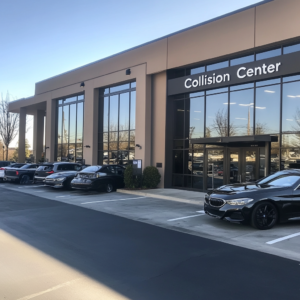By David Roberts and Chris Lane
Focus Advisors Automotive
July 27, 2020
Three months ago, both industry revenues and M&A interest were severely depressed. Operators were pausing, not knowing how far down revenues might go and how long they would stay depressed. Sellers were wondering the same things. Buyers were pausing as the tumult caused by the COVID19 virus was creating enormous uncertainty.
Then the granting of PPP loans, additional capital obtained by the leading consolidators, interest from value-oriented private equity firms and glimmers of hope as assignments began to impact operators and acquirers alike.
At the beginning of the third quarter of this most extraordinary year, we are seeing a few deals being announced. At the same time, we are seeing considerably more interest in finding and engaging with new prospective sellers. Today we are seeing multiple bidders and attractive LOIs, a big change from just a few months ago. From our clients and from our discussions with other operators of all sizes around the US, the pause in acquisitions seems to be over.
For platform targets, above $25 million in revenues, new private equity bidders are competing with the established national and regional players.
We believe there are many reasons why this is the case, and why now. It’s too early to tell what a post pandemic world will look like, but for collision and the automotive aftermarket there are a number of observations and recent trends that seem to be amplifying the attractiveness and value of these businesses.
The Outlook for Collision is Bright (for some)
Miles driven continues to increase. Some forecast miles driven to increase even more rapidly as people avoid community travel, driving instead of flying or commuting via public transit. As of this writing miles driven in the US was down just 3% from Feb levels. The vacation rental market is returning and most forecast auto travel to be the predominant way to get there.
The recently released ACA/AASA Auto Aftermarket sales forecast projects an increase of nearly 12% from this year to next, and 2% from 2019. If the research for that report was compiled in March or April of this year it could be conservative.
Although most collision operators don’t expect to see a return to full 2019 levels until next year, we believe the ones that successfully weather the pandemic downturn will see a market share increase as their competitors fail.
More Qualified Buyers, Inside and Outside the Industry
The 4 big regionals have solid PE backing with a mandate to grow through acquisition: Classic Collision, Crash Champions (with Pacific Elite), Joe Hudsons, ProCare. Meanwhile both Gerber and Caliber have refilled their coffers with some additional debt and are continuing to acquire both market significant MSOs and fill ins.
In addition to these name brand operators there are now 7 private equity firms eager to enter the collision market, most with experienced former operators at the acquisition helm, some which have already issued Letters of Intent and are in Due Diligence.
Several of these PE firms were in the hunt for platforms deals including Joe Hudson and Crash Champions where premium valuations were expected. They issued LOIs, did their due diligence and have a much deeper understanding of the business than some of the newer PE entrants.
With a larger pool of buyers, sellers are finding interest from multiple parties, which drives valuations and increases the chances that a sale gets completed. It also leaves some bidders on the losing end of a good offer, which tends to raise their desire to not lose the next deal.
Market Impactful Platforms are Few, Bolt-ons Cheaper
Although there are 32,000 body shops in the US, there are by our count fewer than 9,000 shops that are considered impactful enough to buy. Even more scarce are large, quality MSOs. In our proprietary database there are only about 125 MSOs with 4 or more locations in the US. Perhaps only one third of those are important enough in their markets to allow an acquirer new to the market to begin developing a regional presence.
In many cases these market dominant operators already have the capital and energy to grow, with little incentive to give up equity or control. The remaining platforms are a precious few, and buyers recognize that.
Despite making initial investments at a premium, investors see an opportunity for excellent returns by growing a platform through less expensive single shop and small MSO add-ons. It’s likely (and unfortunate) that the pandemic will accelerate the need for smaller operators to exit quickly and with less value.
It’s also possible that the pandemic opens up more brownfield opportunities as real estate investors look for more industrial assets, shifting away from retail.
Techs and Experienced Operators Available from Distressed Businesses
A significant factor that inhibited growth last year was a scarcity of technicians and experienced operators. The pandemic has eased that constraint.
The demise of Service King, distress among local operators and less competition from Caliber, are now easing the competition for technicians and operators who have experience with growth and scale. It’s now feasible to develop a plan to enter the collision market and find sufficient talent. This change in the staffing dynamic opens the door to new PE entrants, and makes platforms attractive even if the owner operators wish to exit completely.
But Receiving Full Consideration May Take 1-2 Years
Current offers come with more conditions – specifically, performance hurdles.
Most buyers understand that from mid-March onward business performance has been abnormally low and not reflective of what they’re likely to see in the future. A TTM (trailing twelve month) purchase price isn’t a fair metric of value.
To mitigate risks to the buyer the structure of deals may be different. Winning offers may value the business on 2019 results but condition full payouts on performance hurdles in 2020 and 2021. With upfront consideration based on current performance, the “earnout” portion may be paid out over the next year or two based on the business returning to those levels.
Conclusion
We’ve seen enough activity and LOIs to recognize that significant activity has returned for many sellers. For attractive platforms, values are approaching those we saw a year ago. It takes 6 months or longer to sell a business, to prepare properly for market, run an auction, identify the right partner, and close the transaction. As we see more transactions announced and complete those for our own clients, we will gain confidence that the market has truly returned. By the end of the third quarter of 2020, we will have more data and stronger convictions but the trend is clear: The market is back!





